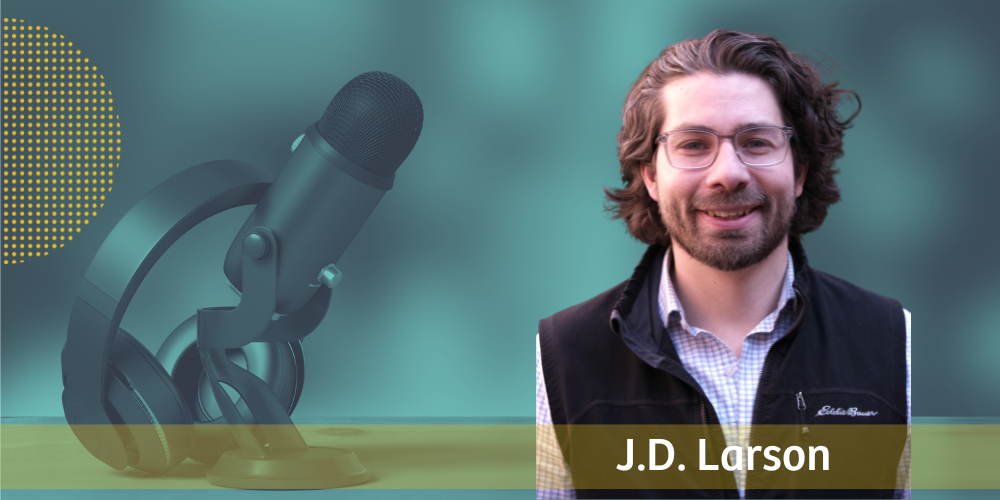Listen
Watch
Show Notes
J.D. Larson wanted to plant a church. So he raised support, gathered a team and launched. When COVID hit, they struggled to connect and decided to try something different. In this episode you’ll learn why one church planter chose Dinner Church to reach his community.
J.D. Larson is a Mission Strategist and Coach with Fresh Expressions. He and his wife, ChristianAnn, co-pastor a Dinner Church called North City Church in Minneapolis. North City is currently working to open a second Dinner Church and has helped other churches nearby start their own Dinner Churches. J.D. previously served as an Executive Pastor at Mill City Church and graduated from Bethel Seminary with a M.Div. He and his wife have three kids and a cocker spaniel who all love the outdoors and good food.
Interview Summary
“I don’t know that I loved living the story while it was happening all the time, but I definitely love to tell the story now.” – J.D. Larson
In this discussion on the Fresh Expressions Podcast, J.D. Larson shared the intriguing transformation from a traditional church plant into a vibrant dinner church community amidst the tumult of global and local upheavals. This episode details the nuances of his journey, exploring the pivot points that redefined church engagement and community interaction in a post-pandemic world.
JD Larson, a ministry veteran with over a decade of experience, co-planted North City Church in Minneapolis alongside his wife, Christian Ann, and a dedicated team. Located in North Minneapolis, the church was born out of a vision to serve the community in innovative ways. Larson’s narrative is especially relevant given the radical shifts necessitated by recent societal challenges, including the pandemic and significant social upheavals.
The Genesis of North City Church
North City Church was initially launched with a traditional church setup, quickly gaining traction and expanding beyond its initial meeting space. However, the growth primarily involved existing Christians from other congregations, which sparked a reflective consideration about the church’s true mission and outreach efficacy. J.D. Larson felt a growing need to reach those outside the conventional church-going demographic, prompting a reevaluation of their approach.
“There was this healthy dissonance, a quiet dissatisfaction…we grew, but the growth was Christians finding us.”
Pivotal Changes Triggered by the Pandemic
The onset of the COVID-19 pandemic, along with societal upheaval following the murder of George Floyd, posed unprecedented challenges that disrupted traditional worship and community engagement. The church was compelled to rethink its methods of congregation and community support, transitioning from in-person gatherings to digital formats and grappling with the immediate needs and safety of its members and neighbors. These challenges highlighted the limitations of the existing church model in times of crisis.
Birth of the Dinner Church
In response to the pandemic’s restrictions on gatherings, J.D. Larson guided North City Church toward a dinner church model, which emphasized communal meals as a central element of worship and fellowship. This shift was not only practical, addressing the need for safer, socially-distanced interactions, but also symbolic, focusing on nourishment, both spiritual and physical, as a fundamental community act. The dinner church model allowed the church to maintain its communal integrity and mission focus during a period when traditional practices were untenable.
“It came to a point where we were challenged… to make that our main thing, to become a table-centric church.”
The Impact of Community Engagement
Adopting the dinner church format had a profound impact on the church’s ability to engage with the broader community. This approach broke down barriers that often kept people from attending traditional church services, such as unfamiliarity with church customs or discomfort with conventional religious settings. The informal, welcoming nature of shared meals facilitated deeper relationships and allowed the church to reach a more diverse group of individuals, including those who might never have considered stepping into a church before.
“It was so empowering for our people to have a meal to invite their friends to.”
J.D. Larson’s journey with North City Church exemplifies the power of adaptability and innovation in faith-based community engagement. The shift to a dinner church not only addressed immediate challenges posed by external crises but also reinvigorated the church’s mission, making faith accessible and relevant to the community’s everyday lives. Larson’s story is a testament to the transformative potential of rethinking traditional models to meet contemporary needs.
Reflection Questions
- What aspects of your community’s needs might be met through less conventional forms of engagement?
- How does the concept of a dinner church challenge traditional views on worship and community?
- What role does innovation play in maintaining the relevance of community institutions?
- How can crisis be viewed as an opportunity for growth and development?
- What does success look like when traditional metrics (like attendance) are set aside?
- What steps can you take today to begin implementing a more inclusive and engaging community model?

